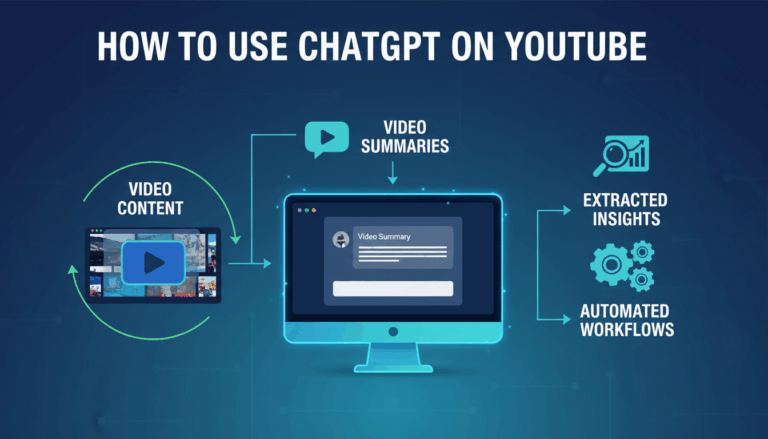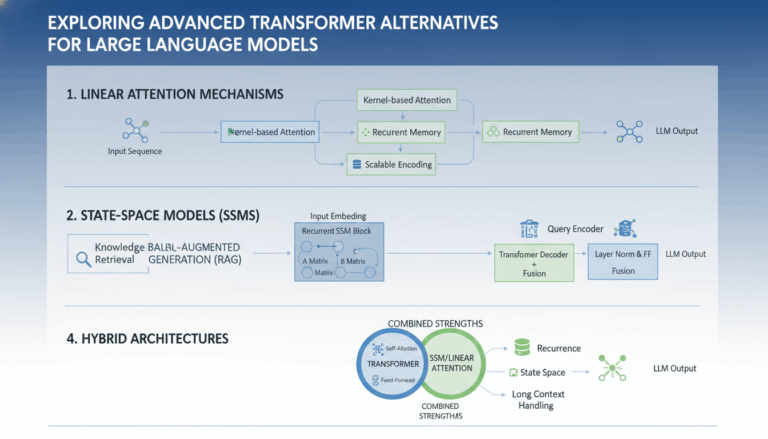Introduction to Docsumm-AI: Overview and Features
Docsumm-AI is a local Python library designed specifically for document summarization, setting itself apart by operating independently of APIs or reliance on cloud-based services. This functionality offers users a high degree of flexibility and privacy, as it eliminates the need to upload sensitive documents to the cloud.
The primary advantage of Docsumm-AI lies in its ability to perform summarization tasks locally on a user’s machine. Unlike many document processing tools that depend on external servers, this library is self-contained, ensuring that all data remains within the user’s control. This feature is particularly appealing for industries where data privacy is paramount, such as in legal or healthcare sectors.
Docsumm-AI utilizes advanced natural language processing (NLP) techniques to produce concise summaries of large volumes of text. By leveraging state-of-the-art algorithms, it efficiently condenses information without losing the original meaning. Users can input a wide variety of document types, from lengthy reports to single chapters of a book, and expect robust summarization that captures the core ideas.
The library is inclusive in its support for various document formats, including PDF, DOCX, and plain text, offering broad applicability across different user needs. The local implementation also means that users do not have to worry about varying API connectivity or subscription fees, which is often a hurdle with cloud-dependent alternatives.
Installing and setting up Docsumm-AI is straightforward, adhering to standard Python package installation procedures. With a few commands in the terminal, users can pave the way to integrating document summarization directly into their existing workflows. This seamless integration is further supported by comprehensive documentation, benefiting both novice and experienced developers alike.
A typical use case involves academia, where research papers and articles are regularly read for insights. Researchers can employ Docsumm-AI to generate summaries that highlight key sections of these documents, optimizing their time for more in-depth analysis of crucial data, rather than initial skimming.
Overall, Docsumm-AI embodies a combination of flexibility, control, and operational efficiency. Its development serves to empower users to handle their document summarization needs locally, providing a tailored solution that respects privacy and promotes accessibility.
Setting Up Docsumm-AI: Installation and Configuration
To begin with, ensure your system meets the necessary requirements for running Docsumm-AI. This includes having a Python environment set up, ideally Python 3.8 or newer, which is essential for compatibility with the library. If Python isn’t already installed on your machine, download and install it from the official Python website. While installing, make sure to check the option to add Python to your system’s PATH — this will simplify running Python commands from any terminal window.
Once your Python environment is ready, consider using a virtual environment to manage dependencies in isolation. Virtual environments help avoid conflicts between different projects by maintaining their respective dependency versions.
To set up a virtual environment, open your terminal or command prompt and navigate to the directory where you wish to keep your projects. Run the following command to create a virtual environment named docsumm_env:
python -m venv docsumm_env
Activate the virtual environment using:
-
Windows:
bash docsumm_env\Scripts\activate -
macOS/Linux:
bash source docsumm_env/bin/activate
With your environment activated, you can now install Docsumm-AI using pip, Python’s package installer. First, locate the package either from a source repository such as GitHub or a downloadable file.
As of the latest available information, you can install Docsumm-AI via a direct command assuming it’s hosted on PyPI or available as a git repository:
pip install docsumm-ai
Alternatively, if you are installing from a GitHub repository, use:
pip install git+https://github.com/username/docsumm-ai.git
Make sure to replace username with the actual repository owner’s username.
Following the installation, you need to configure Docsumm-AI to suit your specific needs. Begin by checking the sample configuration files that are typically included with the package. These files often reside in the config or docsumm directory within the package structure.
Open the configuration file, usually named something akin to config.yaml or settings.py. You can customize settings such as the default input and output directories, logging preferences, and memory constraints. These modifications ensure the library functions optimally within your available system resources.
Ensure that necessary NLP models or datasets required for summarization tasks are downloaded and properly referenced in your configuration. Often, libraries will include utility scripts or commands to facilitate downloading these resources:
python -m docsumm.download_resources
Executing similar commands makes certain that the NLP models are updated and operational.
Run a test summarization to validate that Docsumm-AI is correctly installed and configured. Input a sample document—in any supported format, such as PDF or DOCX—and execute a summary operation:
import docsumm
summary = docsumm.summarize(document_path='path/to/your/document.pdf')
print(summary)
This step confirms that Docsumm-AI processes documents accurately and highlights any issues requiring troubleshooting. By following these steps, you create a reliable setup, allowing you to explore the full capabilities of Docsumm-AI for local document summarization without concerns about data security or unnecessary dependency complexities.
Using Docsumm-AI for Document Summarization
Once Docsumm-AI is successfully installed on your local machine, utilizing its powerful document summarization capabilities requires a few straightforward steps. The library’s ability to process and summarize documents locally ensures that your data remains private and secure.
Begin by importing Docsumm-AI into your Python script. This is typically done at the beginning of your script. You’ll utilize various functions provided by the library to handle document input, processing, and output. Here is a simple example:
import docsumm
Next, prepare the document you wish to summarize. Docsumm-AI supports several document formats such as PDF, DOCX, and plain text, making it versatile for different use cases. Ensure that the document is within your working directory or provide the full path to its location.
Once the document is ready, utilize Docsumm-AI’s summarize function to generate a summary. The function typically requires the path to the document as an argument. Here’s how you might implement this:
summary = docsumm.summarize(document_path='path/to/your/document.pdf')
The summarize function processes the entire document, leveraging advanced NLP models to identify and condense the most relevant information into a coherent summary. These models are capable of understanding context and nuance, ensuring that key ideas are accurately captured.
For users needing to adjust the level of detail in the summary, Docsumm-AI often provides parameters to customize the summarization process. You might specify the percentage of the document to retain in the summary or tweak other settings to match your specific requirements. Check the library’s documentation for these options:
summary = docsumm.summarize(document_path='path/to/your/document.pdf', ratio=0.2)
The ratio parameter controls the brevity of the summary; for instance, a value of 0.2 would aim to condense the document to approximately 20% of its original size.
After generating a summary, display or save it to a file. This can be easily accomplished by printing the summary to the console:
print(summary)
Or, to maintain an archive or further process the summary, you can write it to a text file:
with open("summary.txt", "w") as file:
file.write(summary)
For more complex workflows, especially in professional settings like academia or legal research, integrating summaries into larger systems or databases can be beneficial. Customize scripts to append summaries to databases or incorporate them into content management systems, thereby streamlining workflow efficiencies.
Handling exceptions and errors is a vital aspect of working with any software. Ensure to include basic error handling in your script to catch and manage issues such as file not found or unsupported formats. This can be done using try and except blocks:
try:
summary = docsumm.summarize(document_path='path/to/your/document.pdf')
print(summary)
except Exception as e:
print(f"An error occurred: {e}")
By following these systematic steps, Docsumm-AI can become an invaluable tool in organizing and extracting meaningful insights from large volumes of text, thus enhancing productivity and decision-making processes without comprising data privacy.
Advanced Usage: Customizing Summarization Parameters
To leverage the full potential of Docsumm-AI, users can tailor summarization processes by altering various parameters. This customization enables summaries to be fine-tuned to specific requirements, whether for brevity, depth, or focus on particular themes.
One commonly utilized parameter is the ratio, which determines the extent to which a document is condensed. By default, Docsumm-AI might summarize to a standard length, but adjusting the ratio parameter offers greater control. For example, setting ratio=0.1 condenses the content to 10% of its original size, suitable for executive briefs. Conversely, ratio=0.5 provides a more detailed summary, useful for in-depth analysis.
summary = docsumm.summarize(document_path='path/to/document.pdf', ratio=0.3)
Beyond length, customizing the focus of the summarization can refine results to emphasize specific content areas. Although this might involve advanced NLP model manipulation, users can typically identify sections of text critical to their analysis, guiding the summarization algorithm to prioritize these sections through keywords or topics. Some configurations might support inclusion or exclusion lists, directing the model on what to consider or disregard.
In scenarios requiring the handling of multiple documents simultaneously, batch processing is invaluable. This can be enabled by supplying a directory path containing documents or a list of file paths. Docsumm-AI can then summarize each, applying identical parameters to maintain consistency.
summaries = docsumm.batch_summarize(directory_path='path/to/documents', ratio=0.2)
Ensuring language and terminology consistency across summaries is vital within professional environments, such as legal and medical fields where standard terms must be preserved. Configuration files often allow specifying a set of lexical preferences that assist the model in maintaining specified terminologies or style.
Memory and processing constraints might limit document size and complexity. Customizing chunk sizes or step processing ensures efficient usage of system resources. By partitioning large documents into manageable chunks, Docsumm-AI can process each sequentially, merging results coherently without overloading memory.
Error handling remains crucial in parameter customization. Users should include exception catching around summarization calls to gracefully handle potential issues like unsupported formats or excessive condensation ratios leading to loss of essential details. Implement try and except blocks to capture and log these errors, enabling real-time monitoring and adjustment of configurations for optimal output.
try:
summary = docsumm.summarize(document_path='path/to/document.pdf', ratio=0.3)
with open("optimized_summary.txt", "w") as file:
file.write(summary)
except ValueError as ve:
print(f"Value Error encountered: {ve}")
except Exception as e:
print(f"An unexpected error occurred: {e}")
Leveraging these advanced customization options not only enhances the utility of Docsumm-AI but also empowers users to derive accurate, tailored insights from extensive documents. Such adjustments transform summarization from a one-size-fits-all process to a dynamic, context-sensitive tool, optimizing productivity across diverse applications.
Comparing Docsumm-AI with Other Summarization Tools
When evaluating document summarization tools, several factors come into play, including performance, ease of use, technological approach, and privacy considerations. Docsumm-AI presents a compelling option, particularly due to its local processing capabilities, which provide distinct privacy advantages.
Performance and Capabilities
Docsumm-AI is designed to operate locally, utilizing advanced natural language processing models to efficiently summarize documents without needing an internet connection or external servers. This independence offers a significant performance boost in environments with limited connectivity or strict security policies. By comparison, many other tools such as Google’s T5 or OpenAI’s GPT-based models, while powerful, often rely on cloud-based infrastructure. These require an active internet connection to access remote APIs, potentially introducing latency or dependency issues.
Moreover, Docsumm-AI is optimized for a variety of document types, ensuring versatility in its applications. It can process PDF, DOCX, and plain text formats seamlessly, keeping pace with comprehensive cloud solutions. Some cloud services may offer support for additional formats but could encounter challenges in organization-specific formats.
Ease of Use and Flexibility
One of Docsumm-AI’s major selling points is its ease of installation and configuration. Users accustomed to working with Python environments find Docsumm-AI straightforward to integrate into existing workflows. It aligns with Python’s ecosystem, leveraging virtual environments and standard libraries, thus minimizing learning curves and onboarding barriers.
Conversely, tools like SummarizeBot or TextTeaser, which are available as online platforms or APIs, might not offer the same level of integration without dedicated support for Python developers. These cloud tools often present user-friendly interfaces but can lack the customization depth provided by a locally managed library like Docsumm-AI.
Privacy and Security
Privacy is a paramount concern for many businesses, especially in sectors handling sensitive information. Docsumm-AI’s local processing ensures that no document data ever leaves the user’s controlled environment. In contrast, using cloud-based tools typically involves uploading data to remote servers, which may pose security risks irrespective of the provider’s encryption and data protection measures.
For industries like finance, healthcare, or legal fields, the local and secure nature of Docsumm-AI is especially valuable. By keeping sensitive documents entirely off third-party servers, organizations can comply with stringent data protection regulations such as GDPR or HIPAA more easily.
Cost and Scalability
Typically, locally operated tools like Docsumm-AI avoid subscription fees or pay-per-use charges often associated with cloud services. This can translate to considerable cost savings for companies with extensive document processing needs. While cloud solutions such as Amazon Comprehend or IBM Watson offer scalable power for high-volume processing, they may incur escalating costs based on usage.
Furthermore, the ability to run Docsumm-AI on existing infrastructure empowers businesses to scale their document summarization as needed, without waiting on external service updates or experiencing downtime due to network issues.
Customization and Control
Docsumm-AI offers customization options tailored to unique business needs, from adjusting summarization ratios to defining lexical preferences. This ensures that the summaries produced align with organizational standards and terminologies. While other summarization tools also provide customization, the level of control offered by Docsumm-AI through direct code manipulation can be greater, particularly for users with technical proficiency.
In conclusion, Docsumm-AI stands out in the summarization landscape by offering a local, private, and customizable solution. While other tools may surpass it in certain functionalities such as handling extremely diverse data sources or languages, Docsumm-AI’s emphasis on privacy, integration flexibility, and cost-effectiveness makes it an attractive choice for specific use cases, especially where data security is crucial. As always, the best choice depends on a user’s specific needs and environment.



